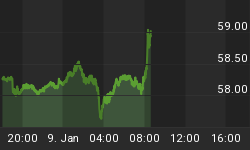The Federal Reserve's QE II asset purchase program is ending, so the Federal Reserve says, at the end of June. As a result, a very large bid is about to exit the U.S. Treasury market, with some even warning of a spike in interest rates on the U.S. government's notes and bonds.
Well, we here at THE CONTRARIAN TAKE thought we would crunch the numbers, to see for ourselves just how big the Federal Reserve's bid has been. Clearly, an important data point given the size of the government's borrowing needs, a data point those that roam the financial markets might find of value, especially those so inclined to buy U.S. Treasury notes and bonds.
The result of our study is this...
Since the Federal Reserve's QE II asset purchase program began in November 2010, the Federal Reserve's bid has not only been a large one, but one that has completely absorbed the government's borrowing needs, and then some. What's more, it's been a bid of increasing intensity too. This is not to say that a spike in the U.S. government's cost of funds is by necessity right around the corner. But clearly, the Federal Reserve's departure from the Treasury market is a funding gap that will have to be filled in size if the U.S. government is going to continue to enjoy what is currently near record low rates of interest on its notes and bonds.
Here's our take...
Let's start with measuring just how big the U.S. government's borrowing requirements have been since the inception of the Federal Reserve's QE II asset purchase program...

More charts and commentary available at: http://blogs.forbes.com/michaelpollaro/2011/06/21/the-end-of-qe-ii-impact-on-the-treasury-market
















